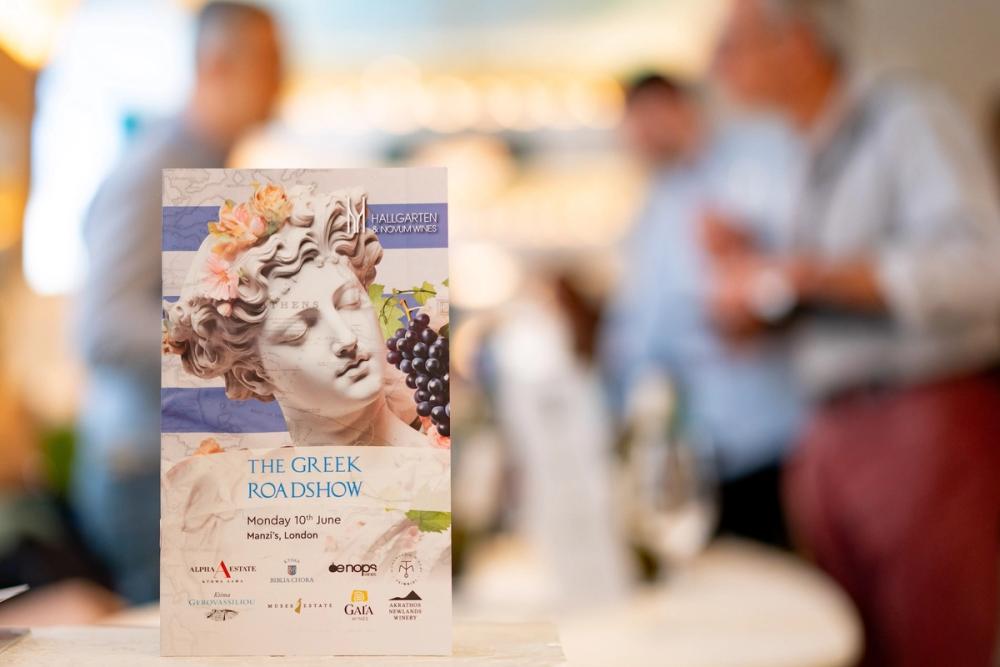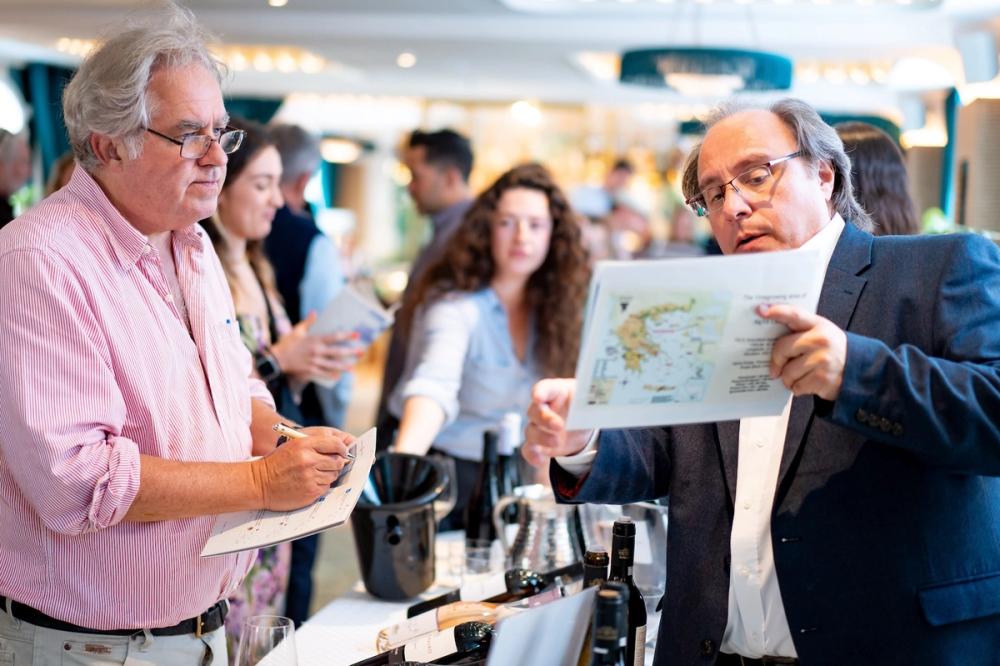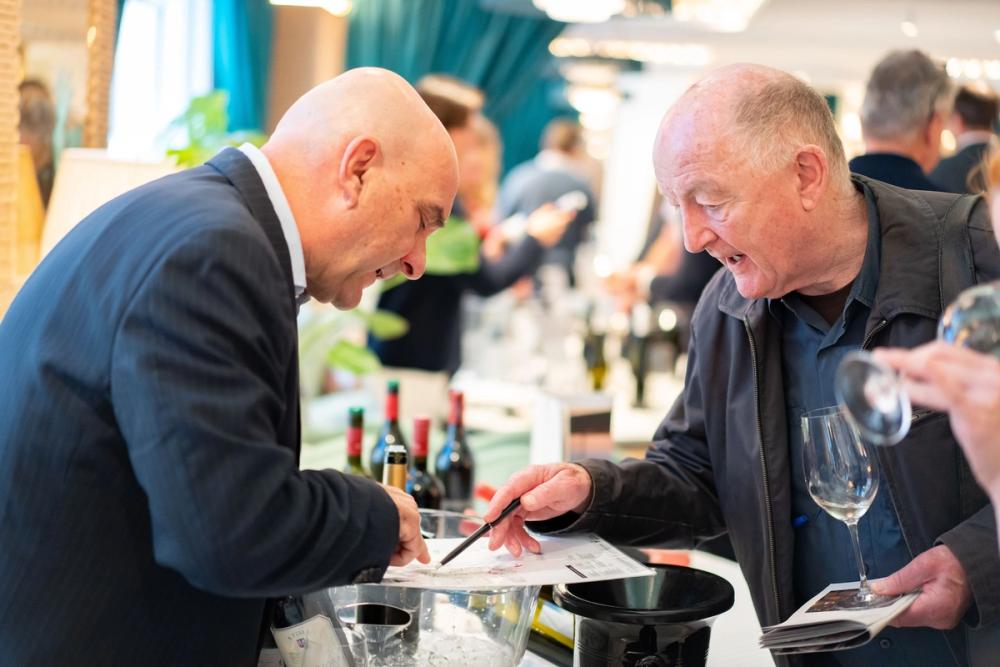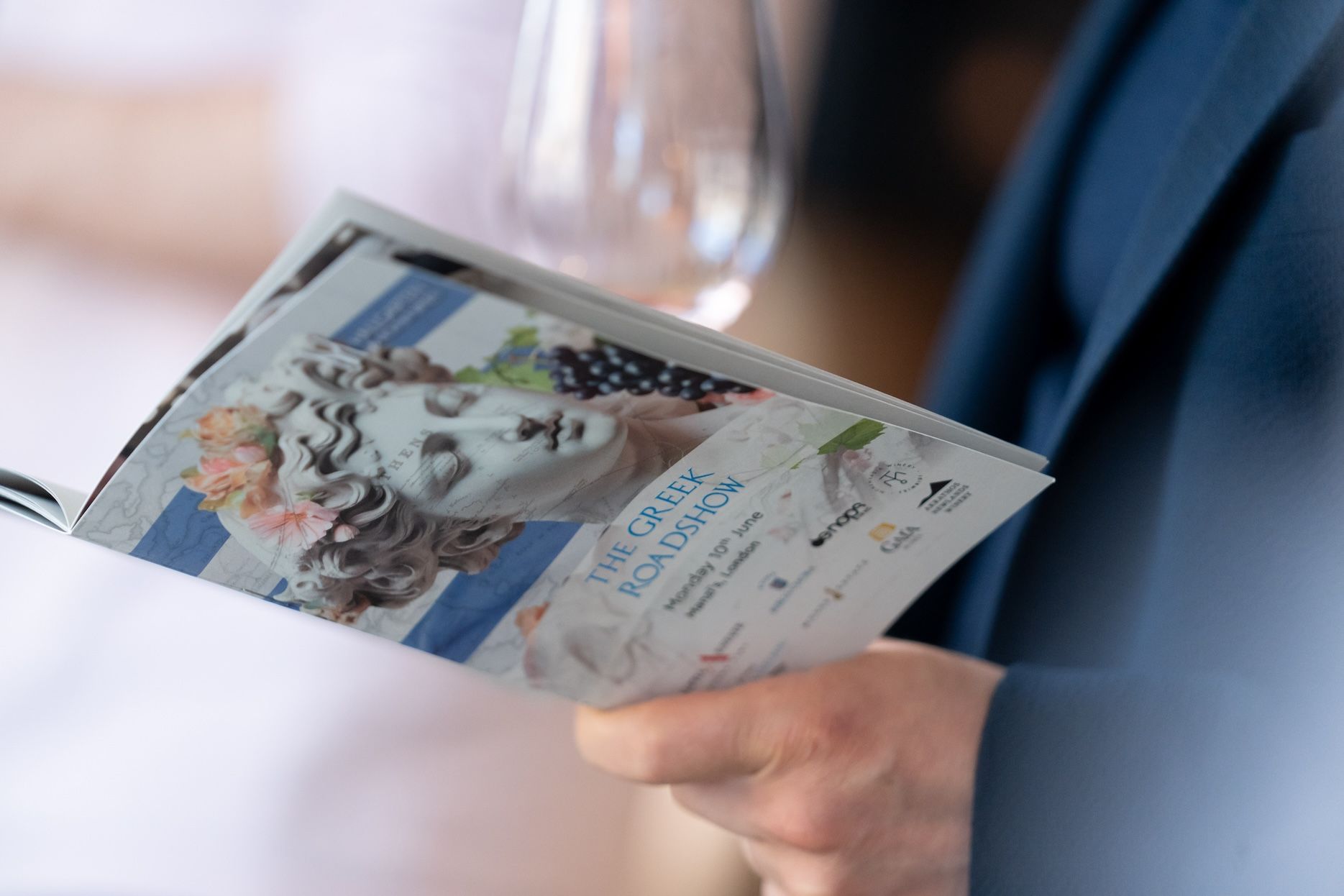When it comes to tastings, Hallgarten & Novum Wines reckons less can be more. A strange thing to say perhaps, given that HN’s annual portfolio event is one of the most overwhelming in the calendar, running over two days with close to 1000 wines. But thankfully HN has launched a series of country specific Roadshows enabling focus on just a few very good producers. After the wines of the Roussillon, then Italy a few weeks ago, it has been the turn of Greece, at Manzi’s in Soho, near (where else) Greek Street.

A good range then?
Well, that would be like asking whether Brexit was a big, big mistake: so yes, very much so. Indeed, the current vogue for Greek wines, which has even washed onto the shelves of Aldi and Lidl, can be largely attributed to HN’s senior buyer Steve Daniel who has been championing them for over 30 years. As he says in the tasting booklet, “Greece has the whole package - incredible winemakers, a dynamic food scene, an inspiring holiday destination… and award-winning wines geared towards the taste of the modern consumer”.
A glance through that booklet confirmed what I already knew – this is a Rolls-Royce of a Greek wine list, featuring some of that country’s most iconic and innovative producers.
There are wines from mountainous North Macedonia, where truly cutting-edge wines are being made from Xinomavro but also from rare varieties brought back from near extinction. There are wines from Central Greece and the Peloponnese – red Agiorgitiko and white Moschofilero. Then there are wines from Crete and Santorini, home to Assyrtiko, probably still the most popular Greek variety in the UK, and what set the Greek wine vogue in motion in the first place.
“What I continue to find amazing about Greece is that there’s always something new - and that’s down to often young winemakers who are truly into what they are doing and always keen to try something different,” says Daniel. “New regions and styles are emerging all the time including pink wine which is now coming to the fore, and shows great age-ability.”

Author Justin Keay getting the lowdown at the Greek Roadshow
So how were the wines?
Eight producers were present:
Oenops Wines, a nine-year-old minimal intervention producer making wines from carefully selected vineyards in Macedonia and Drama;
Ktima Biblia Chora and Ktima Gerovassiliou from Epanomi, Macedonia, connected by family, the former working with white international and Greek varieties, the latter best known for bringing Malagousia back from the dead and helping turn this amazing white variety into one of Greece’s most exciting;
Akrathos Newland, a Greek-US venture established some 90 minutes east of Thessaloniki in 2016, making small volumes of Assyrtiko and Xinomavro in an area with no wine traditions;
Alpha Estate, a high altitude producer based in Amyndeo in the north-west near the border with Albania;
Muses Estate, from Central Greece, focused on a great range of varieties in what winemaker Stelios Zacharias calls “truly unique, historic, hilly terroir”;
Gaia Wines, established 30 years ago by winemakers Yiannis Paraskevopolous and Leon Katatsalos, making iconic Assyrtiko on Santorini (around 150,000 bottles a year) and delicious wines in Nemea in the Peloponnese (around 700,000)
Finally, again in the Peloponnese, Monemvasia Winery Tsimbidi, established 27 years ago to make Monemvasia (a variety which made the “Malvasia” for which this port in Laconia became famous) in its place of origin, alongside other white varieties including Roditis and Kydonitsa. (250,000 bottles a year).

The wines that stood out
So if I had to select 10 wines from this great list (alongside wines which HN lists but had no producers present) which would I choose?
Ktima Gerovassiliou’s Malagousia is one of those wines that always hits the right spot and the current 2023 vintage is no exception; quite rounded and very flavourful, 20% of the wine is oak aged, the rest stainless steel. Give this another year or 18 months and it will be perfect.
Avaton from Ktima Gerovassiliou is another wine that they always seem to get right, a great blend of 60% Limnio, and 20% each of Mavroudi and Mavrotragano. This is from the warm 2020 vintage and is very decent, quite full bodied but with lots of nuance – black cherries, liquorice and vanilla mocha on the palate – this will age nicely but is already drinking well now.
Considering Akrathos Newlands has only been making wines since 2016, all the three wines being shown were remarkably self-assured especially as these are all minimal intervention. The Xinomavro 2016 would be my pick of the bunch, well balanced but quite forceful with nice acidity and a suggestion of blackcurrant and cherry on the finish.
A venture between Makis Mavrides and Bordeaux-trained Angelos Iatrides, Alpha Estate has become one of the stalwarts of the Greek wine scene working with local and international varieties. I really liked the Turtles Single vineyard Malagousia 2023, from Florina, a different style to the Gerovassiliou, a nice creamy texture on the palate with generous fruit but fermented in stainless steel. Good, well integrated acidity. Likewise, the fresh, Xinomavro Single Vineyard Hedgehog Rose 2023 from Amyndeon, the only PDO in Greece for pink wine. Perfect for summer days.
Muses Estate dates back to 1946, making it one of the oldest wineries in Greece thanks to the vision of Stelios Zacharias’ father Nikolaos. They produce half a million bottles in a good year and the wines they are making today are both exciting and innovative. The entry level Clio The White Muse 2023 from the Valley of the Muses, is amazing value at a trade price of just £10.85, lovely balance and character, a blend of Assyrtiko, Roditis and Savatiano whilst the Mouhtaro 2022 made from 100% Mouhtaro comes from ancient bush vines, fermented with wild yeasts. Intriguing, with great balance and lots of dark cherry and berry fruit.
Leto Paraskevopoulou, daughter of Yiannis Paraskevopolous, one of the co-founders of Gaia Wines, is now head of winemaking at the Santorini operation and tasting two of the Assyrtikos produced there - the Thassalitis and the Wild Ferment - you can take it from me she’s doing a fine job. These wines are fascinating alongside each other and quite delicious of course. But the two that got my attention were from the Peloponnese operation, a delicious, moreish pinky-orange Moschofilero Wild Ferment 2022 half fermented in wood - one third French, American and Acacia - and half in steel. My notes simply say “fresh and joyful”. And it is.
The Gaia Estate Nemea 2020 is also great – 100% Agiorgitiko and organic of course (like all Gaia wines); this wine is really nuanced, with great balance and character as well as the black cherry and berry notes for which this variety is famous. In the wrong hands this variety can sometimes seem rather one dimensional (akin to an unrestrained New World fruit bomb) but here careful oak ageing gives a silky, elegant wine full of character.
Talking of joyful, the White Dry Monemvasia Laconia 2023 provides that too. A complex, almost elusive floral nose with suggestions of dried apricot and marzipan: the Monemvasia Winery has done a great job of working with the Monemvasia variety, once confused with Malvasia but genetically quite different and with a distinctive long aftertaste. This is clearly a wine that will improve with age – the clear backbone of acidity running through the wine, which really could be mistaken for a Malvasia, particularly on the nose, reinforces this. The bottle, incidentally, has a wonderful illustration of the fortress of the ancient port of Monemvasia on and clearly evokes this spectacular region.

So was that it?
Steve Daniel had earlier drawn my attention to the unattended tables where some extra bottles were being show. Three wines from here bring my Top 10 to a Baker’s dozen.
First off the Aktriotou Old Vine Savatiano 2020, a fascinating wine made from grapes grown in a 60-year-old vineyard and then left on the lees for 18 months. A full-on interpretation of Savatiano, one of Greece’s duller varieties, which is often used for Retsina and can be quite neutral. This full bodied, zesty complex wine is anything but.
Theopetra Estate has been running since 1996 in a region known for its mystical associations. Wine-wise the estate is also renowned, with Konstantinos Lazarakis MW suggesting “they are often surprising and always excellent” with whites benefitting from limestone soils and reds from sandy/slate sites. Of the two wines I tasted, a powerful Limniona 2021 was a great example of this tricky variety, as you’d expect from a producer at the forefront of the ancient grape’s revival. It’s not a variety you see very often, with lots of dark berry fruit, deep purple in colour with smoky notes and a hint of tobacco and nutmeg.
The white 50/50 Malagousia/Assyrtiko 2023 is a great success too, good acidity supporting marzipan, apricot and white flower flavours, with the latter variety somehow more to the fore.
So 13 outstanding wines out of a great and well-chosen 42. ‘Less really can be more’ I thought again, as I wandered onto the pavements of Greek Street.
Hallgarten & Novum Wines is a commercial partner of The Buyer. To discover more about them click here.
































